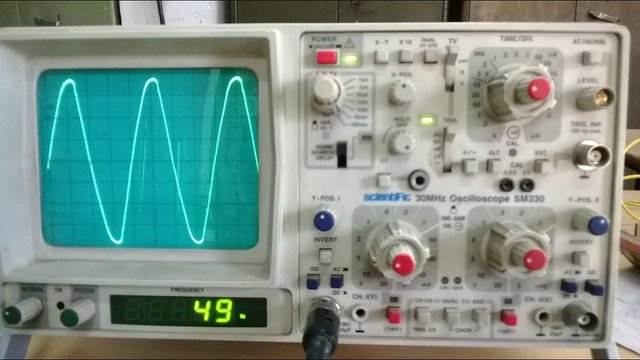Cathode Ray Oscilloscope (CRO) Detailed Explanation
The Cathode Ray Oscilloscope (CRO) is a versatile electronic instrument used to observe and analyze the waveform of electronic signals. The uploaded diagram illustrates the working components and the process involved in displaying the waveform on the screen.
Components and Their Functions
Electron Gun: The electron gun emits a stream of electrons towards the phosphorescent screen. It consists of a cathode, control grid, and focusing anode.
- Cathode: Heated to emit electrons.
- Control Grid: Controls the number of electrons in the beam.
- Focusing Anode: Focuses the electron beam into a narrow stream.
Vertical Amplifier: Amplifies the input signal's vertical component to ensure it can be displayed on the screen. It modulates the vertical deflection plates to move the electron beam up and down.
- Input Signal: The signal to be measured is fed into the vertical amplifier.
Delay Line: Ensures that the signal reaches the vertical deflection plates and the horizontal sweep generator simultaneously, allowing the entire waveform to be displayed from the start.
Horizontal Amplifier: Works in conjunction with the time base generator to control the horizontal movement of the electron beam. It modulates the horizontal deflection plates.
- Time Base Generator: Produces a sawtooth waveform that controls the horizontal deflection of the beam. This provides the time axis on the screen.
Deflection Plates:
- Vertical Deflection Plates: Move the electron beam up and down based on the input signal.
- Horizontal Deflection Plates: Move the electron beam left and right based on the time base signal.
Phosphor Screen: Coated with phosphorescent material that glows when struck by the electron beam, creating a visible trace that represents the input signal's waveform.
Trigger Circuit: Synchronizes the horizontal sweep with the input signal, ensuring a stable and repetitive waveform display.
Power Supply:
- High Voltage (HV) Supply: Provides the necessary high voltage to accelerate the electrons towards the screen.
- Low Voltage (LV) Supply: Powers the other electronic circuits within the CRO.
Working Principle
- Signal Input: The signal to be analyzed is input into the vertical amplifier, which increases its amplitude.
- Beam Deflection: The amplified signal is then applied to the vertical deflection plates, causing the electron beam to move vertically. Simultaneously, the time base generator produces a sawtooth waveform that is applied to the horizontal deflection plates, moving the beam horizontally.
- Delay Line: Ensures that the input signal and the horizontal sweep start at the same time, allowing the waveform to be displayed from the beginning.
- Phosphor Screen: The deflected electron beam strikes the phosphor-coated screen, creating a visible spot. As the electron beam sweeps horizontally and is modulated by the vertical input signal, the waveform of the input signal is traced out on the screen.
- Triggering: The trigger circuit ensures that the horizontal sweep starts at the same point of the waveform each time, resulting in a stable display.
Applications
- Voltage Measurement: CRO can measure peak, peak-to-peak, and RMS voltages of signals.
- Frequency and Period Measurement: By adjusting the time base, CRO can measure the frequency and period of periodic signals.
- Phase Difference Measurement: Comparing two waveforms displayed on the screen, the CRO can measure the phase difference between them.
- Signal Analysis: Used for observing and analyzing complex signals in electronic circuits.
- Transient Response Analysis: CRO can capture and display transient phenomena in electronic circuits, such as pulses and spikes.
Conclusion
The CRO is a powerful tool for visualizing and analyzing electronic signals, making it indispensable in electronics labs and for various applications in engineering, research, and education.

Congratulations, your post has been upvoted by @upex with a 0.31% upvote. We invite you to continue producing quality content and join our Discord community here. Visit https://botsteem.com to utilize usefull and productive automations #bottosteem #upex
Downvoting a post can decrease pending rewards and make it less visible. Common reasons:
Submit